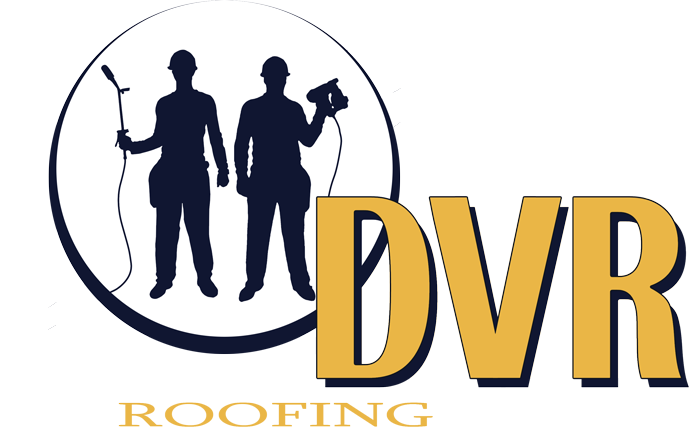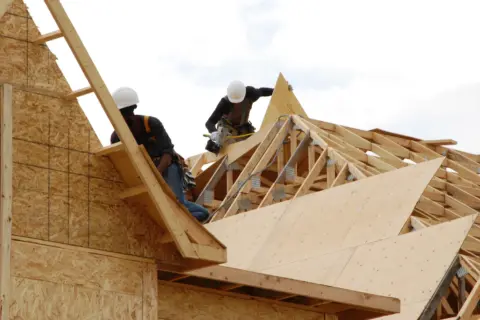How Long Do Roofs Last in Canada
When it comes to the longevity of your home, few elements are as crucial as the roof—especially in Canada’s ever-changing and sometimes harsh climate. Your roof protects against rain, snow, wind, heavy rain, temperature extremes, and extreme weather conditions. Understanding how long different roof types and roofing materials last in Canada is essential for homeowners looking to make informed decisions about their properties.
In this blog post, we’ll delve into the factors that influence the lifespan of roofs, how long do roofs last in Canada, explore various roofing materials, offer tips for extending the life of your roof, and guide you on when it’s time for a roof replacement.
Understanding Roof Lifespan
Roof lifespan refers to the number of years a roof can effectively perform its primary function without significant issues. The average lifespan of a roof can vary significantly based on factors such as the roofing material used, the quality of installation, and the local climate. In Canada, where winters can be brutal and summers scorching, understanding how these factors interact is vital.
Factors Influencing Roof Longevity
Several factors contribute to the overall lifespan of a roof. These interconnected factors are pivotal in determining whether your roof will stand the test of time or require premature replacement.
Quality of Materials and Installation: Using high-quality roofing materials and types of roofs and ensuring proper installation significantly impacts a roof’s lifespan.
Ventilation and Insulation: Adequate ventilation and insulation in the attic help regulate temperature and moisture levels, preventing premature deterioration in the current roof.
Roof Pitch and Design: The pitch or slope of the roof affects how effectively it sheds water and snow. Proper design contributes to longevity.
Regular Maintenance and Care: Regular inspections and timely maintenance can catch minor issues before they escalate, extending the life of your roof.
Roofing Materials and Their Lifespan
Different roofing materials have varying lifespans and come with their own sets of advantages and challenges.
Asphalt Shingles: One of the most common roofing materials, asphalt shingles have an average lifespan of 20 to 30 years. They are cost-effective but may require more maintenance over time.
Metal Roofing: Metal roofs can last anywhere from 40 to 70 years. They are durable, energy-efficient, and environmentally friendly.
Wood Shingles/Shakes: Wood shingles or shakes have an average lifespan of 20 to 40 years. They offer a natural aesthetic but require regular maintenance to prevent rot and pests.
Slate Roofing: Slate roofs are known for their beauty and durability, lasting around 50 to 100 years or more. However, they are also among the most expensive options.
Extending Roof Lifespan
Fortunately, there are steps you can take to extend the lifespan of your entire roof and minimize the risk of premature replacement or partial roof replacement.
Professional Inspections and Maintenance: Regular inspections by roofing professionals can catch issues early and prevent them from worsening.
Addressing Issues Promptly: If you notice damaged or missing shingles, leaks, or other problems, addressing them promptly can prevent further damage.
Gutter and Drainage System Maintenance: Keeping gutters and drainage systems evident prevents water buildup, which can lead to roof and structural damage.
Proper Attic Insulation and Ventilation: A well-ventilated and adequately insulated attic helps regulate temperature and moisture, reducing stress on your roof.
Signs of a Deteriorating Roof
Knowing the signs of a deteriorating roof can help you take action before the situation becomes dire.
Interior Indicators: Water stains on ceilings, peeling paint, and mold growth are signs of potential roof leaks.
Exterior Indicators: Curling, cracked, or missing shingles, as well as excessive granule loss, are signs of roof wear.
Alarming Signs: Sagging areas, daylight showing through the roof boards, and widespread shingle deterioration require immediate attention.
When to Consider Roof Replacement
There comes a point when repairs are no longer sufficient, and a roof replacement is the best option.
Assessing Overall Roof Condition: A professional assessment can help determine if your roof’s condition warrants replacement.
Cost Comparison: Sometimes, continual repairs can cost more than a new roof in the long run.
Choosing the Right Time for Replacement: Plan your replacement during favorable weather conditions to minimize the inconvenience and cost of roof replacement.
Selecting Appropriate Roofing Materials: Consider durability, climate suitability, additional cost, and aesthetics when choosing new roofing materials.
Choosing a Reliable Roofing Contractor
Selecting the right contractor or professional roofers for your roof replacement is as essential as choosing suitable materials.
Research and Background Check: Look for reputable contractors with a proven track record in your area.
Reading Customer Reviews and Testimonials: Feedback from previous customers can provide insights into the contractor’s work quality.
Importance of Proper Licensing and Insurance: Ensure the contractor has the necessary licenses and insurance to protect you from liability.
Getting Detailed Estimates: Obtain estimates from multiple contractors and compare them thoroughly before deciding.
Follow the steps suggested above before deciding which roofing company you’ll hire to take care of all your roofing needs. If you want to know how much does a metal roof cost in Ontario, just check out our blog now!
Conclusion
Your roof is more than just a covering—it’s a critical component of your home’s structural integrity and longevity. By understanding the factors that influence roof lifespan, the signs of deterioration, and the steps you can take to extend your roof’s life, you can make informed decisions that will benefit your home and your wallet in the long run. Whether you’re a homeowner looking to maximize your investment or someone in the market for a new home, the knowledge you’ve gained about roofs in Canada will undoubtedly serve you well. Remember, a well-maintained roof isn’t just a symbol of shelter; it’s a testament to your commitment to a safe and comfortable home.
Elevate Your Roof’s Lifespan with DVR Roofing
Your Partner in Canada! Your roof deserves the best protection against the elements. At DVR Roofing, we’re committed to extending the life of your roof through our exceptional services. Reach out today and experience roofing solutions that truly endure.
FAQs: How Long Do Roofs Last in Canada
How long can I expect my roof to last in Canada’s climate?
A roof’s lifespan in Canada varies depending on factors like material, maintenance, and weather conditions. Generally, asphalt shingle roofs last around 20-30 years, while metal roofs can last up to 50 years or more with proper care.
Does heavy snowfall affect the longevity of roofs in Canada?
Yes, heavy snowfall and ice accumulation can impact the lifespan of roofs. Proper insulation, ventilation, and regular snow removal can help prevent excessive weight and potential damage to extend the roof’s life.
Are there roofing materials better suited for Canada’s climate?
Yes, some roofing materials are more resilient in Canada’s climate. Metal, cedar, and synthetic materials offer durability against cold, snow, and moisture, making them popular choices for Canadian roofs.
Can I extend my roof’s lifespan through maintenance?
Absolutely! Regular roof inspections, addressing minor repairs promptly, and keeping gutters clean can significantly extend the life of your roof in Canada’s challenging weather conditions.
What role does proper ventilation play in roof longevity?
Proper ventilation helps regulate temperature and moisture levels in your attic, which is crucial for preventing ice dams, moisture buildup, and premature roof aging. Well-ventilated attics contribute to a longer-lasting roof in Canada.


